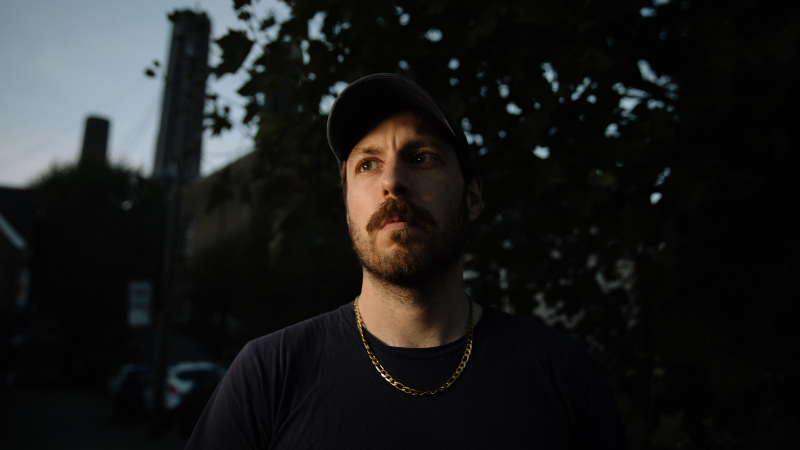It’s not every day you meet a producer who fuses classical training, a background in tech innovation, and a deep love for dance music into a debut this powerful. But Lawrence Hart isn’t your typical DJ. On Come In Out Of The Rain, the UK-based producer delivers a 12-track emotional garage journey that is both technically precise and profoundly moving.
Released on Domino’s Double Six imprint, and backed early by Sian Eleri, Jaguar, and Danny Howard, the album invites listeners into a world of cinematic synths, layered vocals, and breakbeat nostalgia. The lead single hits hard with gritty energy, while tracks like “Hear Ur Heartbeat” and “Closer To You” explore a more vulnerable, emotional soundscape.
In this interview, I sit down with Lawrence to discuss the science behind the music, the stories that shaped the album, and his journey from playing jazz clubs in New York to performing at Corsica Studios in London. Lawrence Hart is definitely one to watch, and Come In Out Of The Rain is a strong sign of the great things ahead.
This was a special conversation for me, and it’s my pleasure to introduce you to Lawrence Hart.
Your album has been described as an “emotional garage record” with both euphoric highs and moments of fragility. How did you approach balancing those emotional contrasts sonically across the 12 tracks?
I used a certain selection of equipment that tied the record together sonically. For the ambient moments, I used a granular sampler that I use on most tracks, to create the atmospheric beds. A lot of the synth sounds were from the Moog One. And my ear is generally drawn to a certain sound sonically when it comes to samples. So I think, even though the emotional sound of the record undulates, my melodic instincts helped keep it cohesive.
You’ve said the album is about “truly accepting yourself.” Can you elaborate on how that personal journey shaped the music, especially in tracks like “Fucking Mega”?
A big part of that is feeling comfortable putting quite emotional sections into dance music, which I think in the past I might have shied away from on certain tracks, feeling like you couldn’t have those moments on a club record.
I think “Fucking Mega” is a great example of that, in the way that even though there are so many tough sections in the production, there’s a lot of vulnerability in certain sections of the song too. I didn’t get in the way of myself when creating the song, I just let it unfold in a way that felt natural to me.
From studying jazz trumpet in New York to collaborating with George FitzGerald, your musical journey spans diverse worlds. How have classical and jazz foundations influenced your approach to electronic music production?
What studying jazz and classical music has given me is a deep understanding of harmony and rhythm. Even though electronic and dance music is mainly focused on 4:4 beats, there’s a lot of rhythm and percussive elements that use odd rhythmic cycles that comes from that background.
Even though the harmony is not dense or complex like a lot of the jazz music that I used to play would be, that deeper understanding of the harmonic structures has allowed me to be very specific when getting the right emotional impact out of the harmony.
Although, when I did first start making electronic music, I found my classic and jazz training to be a hindrance at first, because I was too focused on the technical elements of the composition and not enough on the sonics and vibes of the piece.
You mention a desire for the melodies to “float” while keeping a “gritty and mechanical undercurrent.” What production techniques did you use to achieve that textural contrast?
Before talking about the production side of it, one of the most important things that I use to keep these elements afloat is removing the ‘third’ from the chords. From a harmonic point of view, if you want to get a chord to feel like it’s floating, you take out the notes that define that chord too heavily, so if you take out the major or minor thirds and replace them with a suspension, it creates that floating feeling.
In terms of the production techniques for this effect, I like to use a lot of sidechain multiband compression on the pads, so that when the kick or snare hits, it will duck certain lower frequencies in the pads, so that you’re grounded.
I’ll then use the side chain multiband expansion off certain rhythmic elements on the high frequencies of the pads and melodies, so that then the high frequencies pump with those same rhythms.
You’ve had massive support across BBC Radio 1, Mixmag, and even Spotify Altar. How have those platforms shaped the way you think about releasing music today, especially with such a personal debut?
To be honest, I just focus on making the music I want to make. I then listen to my management and the label around me to suggest what’s best in terms of how to release. But I think in terms of the music I make, I try to stay as far away from letting any elements of the industry affect that.
But having said that, I think through the existence of some of these institutions, I do think there’s more micro genres that are able to exist and fans of all sorts of different types of music can become exposed to these by these platforms, so I do think I exist within an era that gives some more creative freedom than I might have had in the past. But I have been making music within an ecosystem that has had these institutions around me the whole time, so they feel second nature to my surroundings.
Your grandfather, Geoff Tootill, was a computer pioneer. Do you see any parallels between your family’s legacy in computing and your use of technology in making emotionally resonant music?
Yes, 100%. Because of my grandfather, I grew up with computers and at a very young age was using all sorts of software – and started producing music at a young age as well because of this. My grandfather also got me started on my first instrument, the trumpet, and had equal love for music made with acoustic instruments as he did for technology. So that’s a balance that’s always been present in my life too.
You’ve just played Corsica Studios with Model Man and Ruthlss. What can fans expect from your live show, and how are you translating this deeply layered record into a live experience?
The live show is a mix of harder clubbier moments, alongside ambient improvisations that I make using my trumpet running through a sampler. I’m playing stuff from the record, older material and some unreleased stuff too. I’ve stripped back a lot of the parts from the record to make more direct and less busy live versions of the tracks. I’m also playing most of the synths live on an analogue synth, which allows me to improvise with the parts a bit, change certain chords and give me more freedom live. So I think it’s a healthy balance of expected and unexpected elements throughout the set.
Thanks for doing this. I enjoyed our time together. In all of the interviews I do, I always give the artist the last word. Go.
Thanks for having me. I’m so happy to have this album out, and at the same time I’m so excited to share new music, and have a lot of releases planned, so keep your ears out for the next instalment coming very soon…





